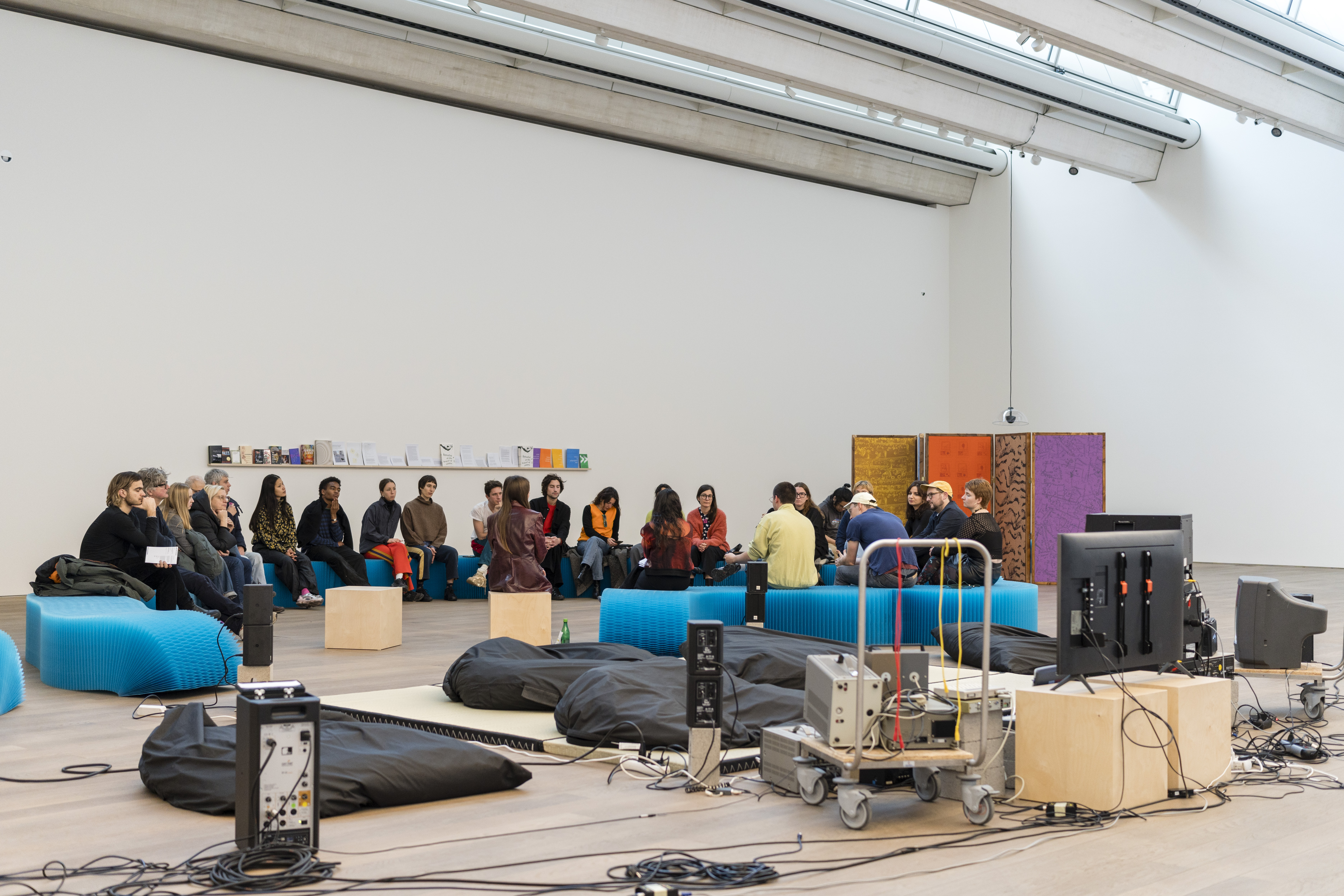Lynn Klemmer is a multimedia artist. She graduated at the National College of Art and Design in Dublin with a BA in Fine Art & Visual Culture (2017) and at the University of Potsdam with an MA in European Media Studies (2023).
Her practice works at the crossroads of analog and digital media, seeking to reconsider the place of the human in a rapidly evolving algorithmic, urban and natural landscape. By merging various visual elements, from natural imagery to digital symbols, advertisements and desolate urban structures, her films and installations suggest dissonant atmospheres and form hybrid audiovisual realities.
She is also a co-founder of Mnemozine, a Luxembourgish interdisciplinary research and
art collective which manifests itself as a platform for experiments in philosophy, sociology and contemporary art practice. As co-director of Six Minutes Past Nine, she is currently hosting a new virtual research and studio program.
A video pamphlet proclaiming art as an all-encompassing power-generating infrastructure.
Drawing from a blue inkwell of analog and new media, such as distorted RGB video signals, VHS footage of high-voltage towers, and digital video collages, the video playfully highlights the magnetic push-and-pull of artistic creation. Through juxtaposition and synergism of images, it creates a gyrating vortex to represent the process by which art upends the world.
Where art touches, its colours seep through; where art lets go, structures collapse. Where its buzzing is felt, the order is upset; where its flickering is seen, things are set in motion. A source without a signal, as invisible and permeating as electricity, it is pure connection, pure relation, electromagnetic intuition.



APPARATUS is a collaborative project designed together with my art and research collective MNEMOZINE.
Over two weeks, we experimented with the concept of technological obsolescence and how past media may resurface with new vigour in the digital age.
Two video works, L.I.S.A. and What Fires Together Wires Together, were exhibited alongside projects by MNEMOZINE and other international collectives in MUDAM’s East/West Galleries for their exhibition THE COLLECTIVE LABORATORY, 27.11.23 - 14.01.2024.



Photos © Fabrizio Vatieri
An installation and corresponding video work grappling with occult
witchcraft rituals for predicting the future, such as bone throwing and
molybdomancy. Drawing parallels between algorithmic pattern
recognition and fortune telling, the work documents how new media
and superstition spill over into each other.


Burial of a Certain Presence Photography series, 2023-ongoing
An ongoing photographic series created in collaboration with photographer Mathieu Buchler. Through staged black-and-white and colour photographs of installations, performances and both morbid and serene natural scenery, the project seeks to grapple with distorted memories, rituality, death, love and
healing.

Exhibition view, Kulturfabrik ©Mathieu Buchler